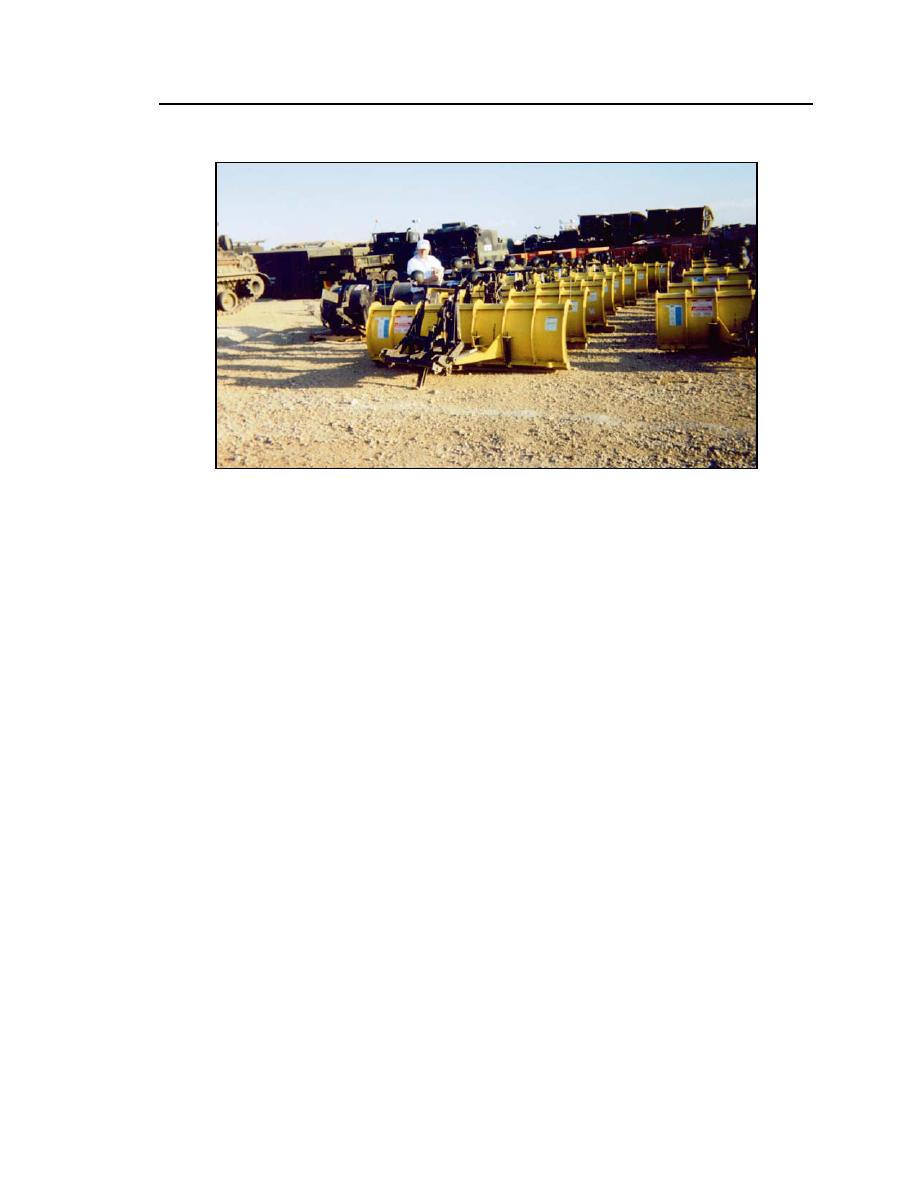
16
ERDC/CRREL SR-02-1
Figure 7. The author in Kosovo in 2000 inspecting HMMVW snowplows for
necessary repairs and to conduct training. Note also the 5-ton-truck snow-
plows and sand/salt spreaders.
The plow uses a quick-connect and disconnect system called a Minute-
Mount (see Appendix F). Once the frame push-plates and the wiring harness,
including the plow controller, have been semi-permanently installed on the
HMMWV, the basic plow unit and all other attachments, including lights,
directional signals, controlling pump and motor, in a single package, can be
mounted and dismounted in less than a minute. The mounting frame push-plates
do not normally require drilling, cutting, welding, or other modification on the
HMMWV. Instead, bolt holes already in the frame and the bumper are used. The
24-volt wiring harness plugs into the current lighting harness and the power cable
goes from a solenoid through the firewall to the battery. A controller cable is run
through the firewall on the driver's side to the plow control switch, which is
mounted on the dash with Velcro.
USACRREL had a complete snowplow set designed and made up for the
M-998 series HMMWV. A plow was obtained by USACRREL, mounted on a
HMMWV, and demonstrated and evaluated on hard-surface and gravel roads,
trails, and off-road at the Vermont Army National Guard Ethan Allen Training
Center in Jericho, Vermont. Snow depths averaged from four to nine inches in
both new and old snow or a combination thereof. Snow density varied from light
to heavy and the capability of the HMMWV with snowplow varied only slightly,
and in all conditions was impressively successful. In accordance with data from
previous studies, and common use throughout the industry, snowplowing opera-



 Previous Page
Previous Page
